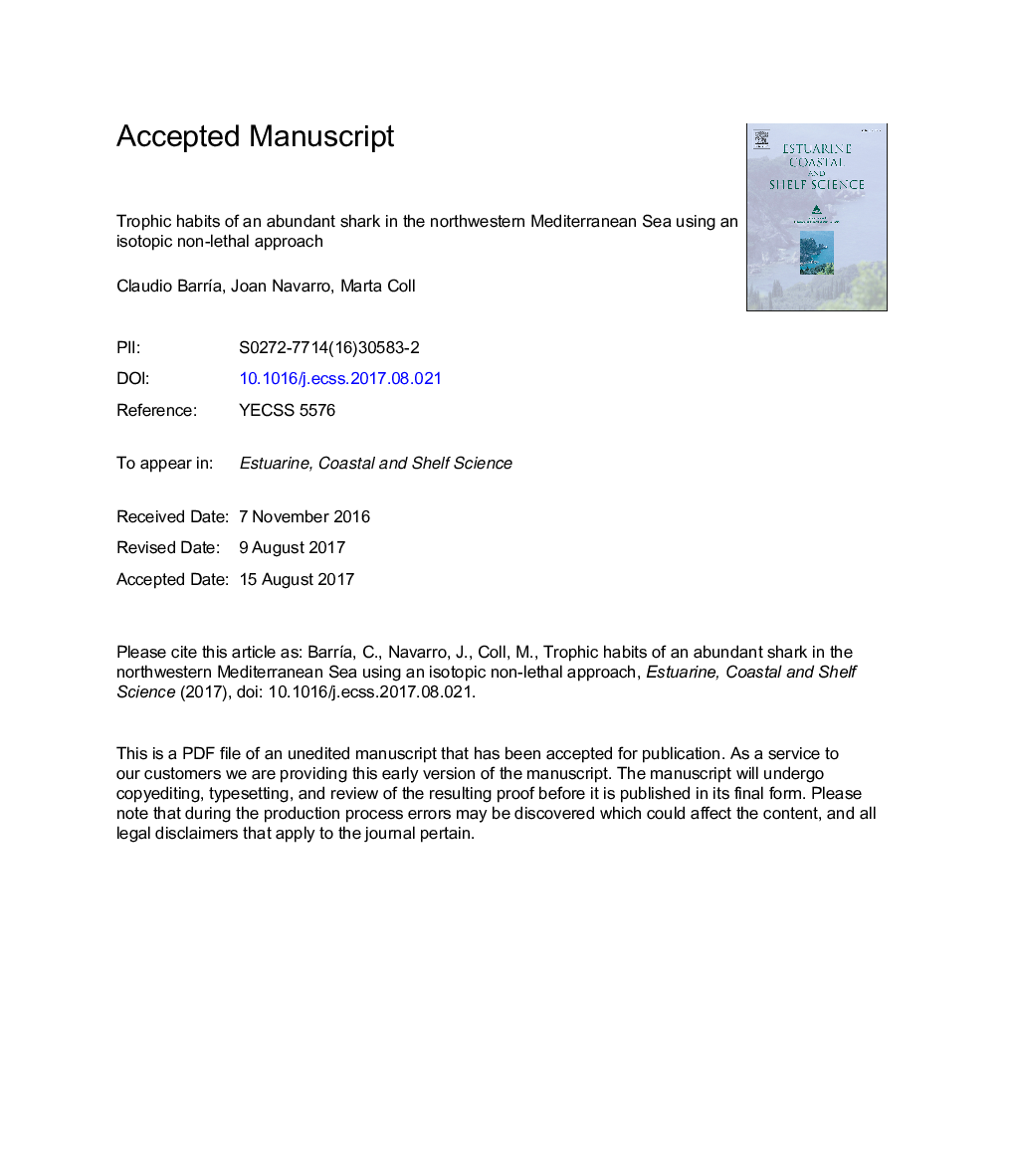| Article ID | Journal | Published Year | Pages | File Type |
|---|---|---|---|---|
| 8884838 | Estuarine, Coastal and Shelf Science | 2018 | 30 Pages |
Abstract
Studying the feeding ecology of an organism is essential to understanding its ecological role in the ecosystem. Although the small-spotted catshark (Scyliorhinus canicula) is widely studied, most feeding studies have been conducted using invasive techniques, such as the analysis of stomach contents. Moreover, information from the Mediterranean Sea is surprisingly scarce and not up to date. Here, we studied the feeding ecology of the small-spotted catshark in the northwestern Mediterranean Sea using stable isotopes (nitrogen and carbon isotopic values) from blood samples, with individuals released alive in the area of capture after sampling. In overall for the population of small-spotted catshark, the isotopic values were â19.01 ± 1.12â° and 8.03 ± 0.61â° for δ13C and for δ15N, respectively. Results reveal a diet mainly composed of euphausiids, with sex and size variations. Results confirm the ecological role of the small-spotted catshark as a mesopredator, which holds a trophic position similar to skates and rays in the study area, but lower than the other demersal and pelagic sharks analysed. The trophic behaviour of the small-spotted catshark indicates its high trophic plasticity, which could allow this species to thrive in highly exploited environments. Our methodological approach, which did not damage the target species, presents new possibilities for conducting ecological studies with other elasmobranchs in the Mediterranean Sea, a highly exploited area that hosts many threatened and rare species.
Related Topics
Physical Sciences and Engineering
Earth and Planetary Sciences
Geology
Authors
Claudio BarrÃa, Joan Navarro, Marta Coll,
